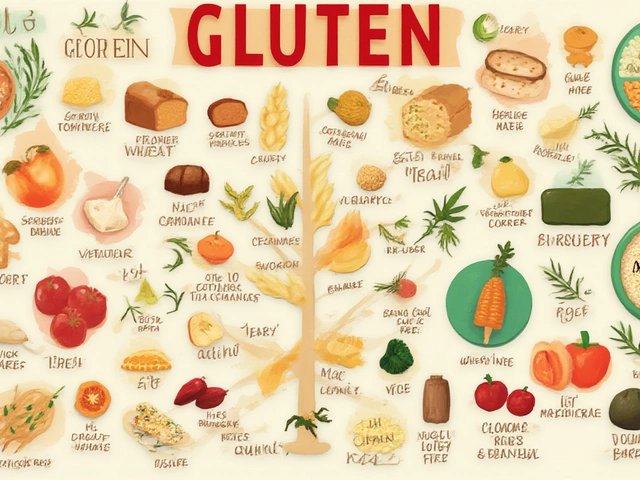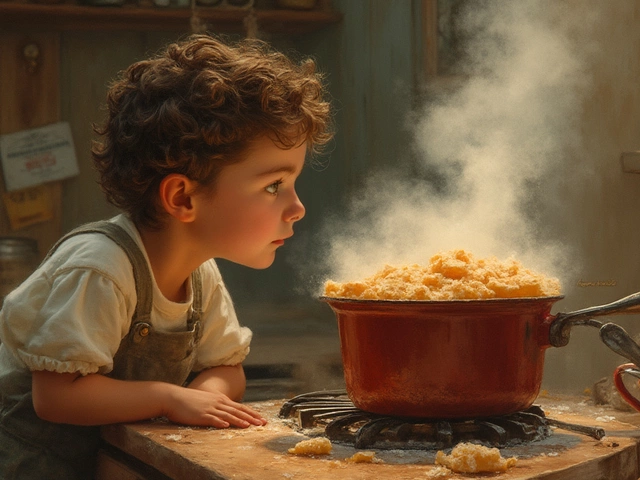Mascarpone Cheese History
When you hear mascarpone cheese, a rich, buttery spread from Lombardy that’s a staple in Italian sweets. Also known as Italian cream cheese, it’s made by gently heating cream and adding an acid to thicken it. This simple process creates a velvety texture that’s perfect for frosting, filling, and, of course, the famous layered dessert.
What Sets Mascarpone Apart?
Another fresh cheese that often gets confused with mascarpone is ricotta, a grainy whey cheese traditionally used in pastas and pastries. While ricotta is drained whey, mascarpone skips the curd‑forming step and stays smooth. Both originate from Italy, but their production methods and end‑uses diverge sharply. This distinction matters when you swap one for the other in a recipe—ricotta brings a lighter texture, whereas mascarpone adds richness.
When you compare mascarpone to cream cheese, a spread made from a mixture of milk and cream that’s cultured and aged, you’ll notice higher fat content and no tangy flavor. Cream cheese is popular in American cheesecakes, while mascarpone shines in Italian treats. Their overlap lies in the dairy base, but the extra cream in mascarpone creates that melt‑in‑your‑mouth feel that chefs prize.
One of the most celebrated desserts that relies on this cheese is tiramisu, a layered coffee‑flavored cake made with ladyfingers, espresso, cocoa, and a mascarpone mixture. The cheese supplies the silkiness that balances the bitter coffee and sweet cocoa. Without it, the dessert would feel dry and lack its signature creamy bite. This link between mascarpone and tiramisu illustrates how a single ingredient can define a whole cuisine.
Beyond tiramisu, mascarpone fuels a whole family of Italian desserts—from fruit‑topped tarts to airy mousse cakes. Its neutral taste lets bakers pair it with fresh berries, chocolate, or citrus without overwhelming flavors. That adaptability explains why modern chefs experiment with flavored mascarpone, adding vanilla, honey, or even pumpkin puree for seasonal twists.
The cheese’s production hinges on three key attributes: fresh cream, a gentle heat, and an acid such as lemon juice or citric acid. By heating the cream to about 85 °C and then adding the acid, the proteins coagulate while the fat remains suspended, forming a thick, smooth curd. The mixture is then cooled and drained, resulting in a product that can be stored for several weeks if kept refrigerated.
Practical kitchen tips matter, too. For the best texture, use heavy cream with at least 35 % fat and avoid ultra‑pasteurized varieties, which can inhibit proper thickening. Stir the mixture slowly to prevent air bubbles—those bubbles turn into tiny pockets that can make the final spread grainy. Once set, transfer the mascarpone to a clean container; any metal contact can affect its flavor over time.
Storage is straightforward: keep it sealed in the fridge at 4 °C or lower. It stays fresh for about two weeks, but the flavor improves after a day of resting, as the fats meld. If you notice a sour smell, that’s a sign it’s gone bad—discard it to avoid food‑borne issues.
Today, mascarpone enjoys global popularity. Artisan producers in the United States and Australia mimic the traditional Italian method, often marketing it as “premium” or “organic.” These versions sometimes incorporate local milk sources, which can subtly change the taste profile, but the core process remains the same—heat, acid, set.
Nutrition-wise, mascarpone is calorie‑dense, packing roughly 450 kcal per 100 g, most of which comes from fat. It supplies modest amounts of calcium and vitamin A, but because of its richness, a little goes a long way. Pair it with fresh fruit or light sponge layers to keep desserts indulgent yet balanced.
Below you’ll find a curated set of articles that dive deeper into mascarpone’s origins, compare it to other dairy spreads, and show you how to incorporate it into everyday baking. Whether you’re curious about the cheese’s historic roots or looking for fresh recipe ideas, the collection offers practical insights that build on the basics covered here.

Mascarpone cheese origin: history, production, and role in tiramisu
Explore the history, production and key facts behind mascarpone cheese, its Lombard roots, how it's made, and why it became the essential ingredient in tiramisu.
View More




